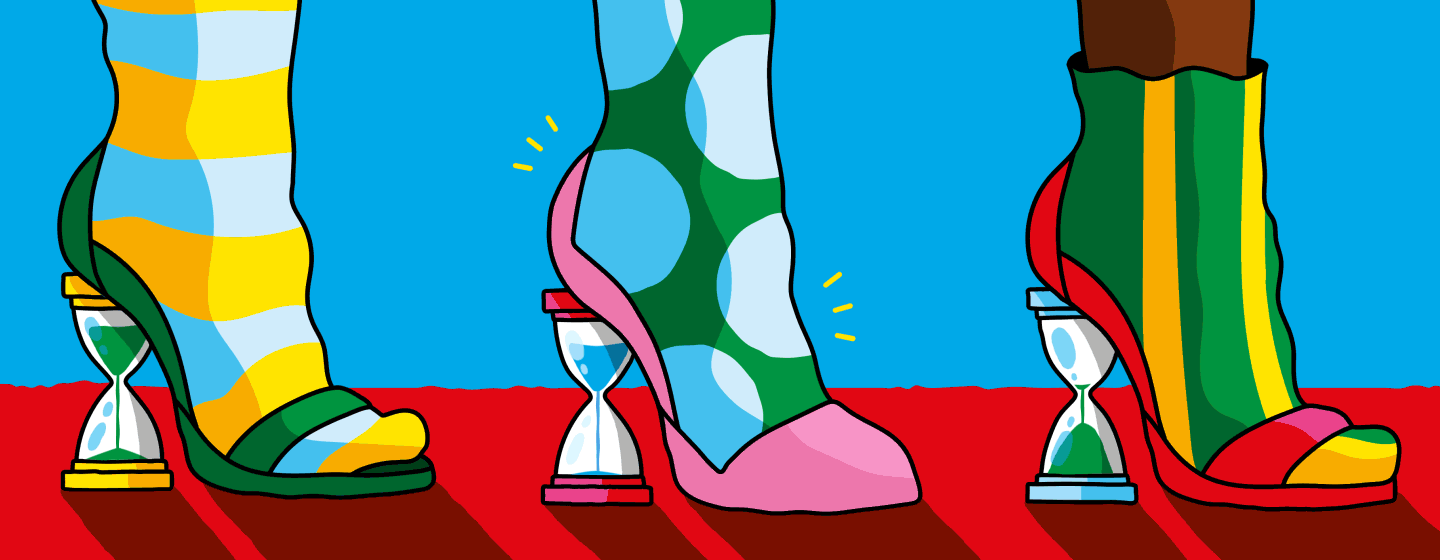Are you a woman between the ages of 35 and 55? You may be having a midlife crisis, says Chris Norris, managing editor at Sleep Standards. Didn’t realize it? That’s because while we’re commonly bombarded with images of affairs and red convertibles as signs of midlife crises, that’s simply not the reality of it for most women. The phrase “midlife crisis” was popularized in 1984 by Gail Sheehy, a journalist who wrote Passages: Predictable Crises of Adult Life. Sheehy described the midlife crisis as anxiety surrounding the idea of mortality, and she said that everyone — regardless of gender — experiences this between the ages of 37 and 42.
“A midlife crisis for a woman can feel like a combination of physical and psychological changes,” says Nicole Arzt, a licensed marriage and family therapist who serves on the advisory board for Family Enthusiast. It tends to be more intense for women, as the crisis coincides with hormonal changes: It’s like battling psychological and emotional issues simultaneously, Norris says. Emotionally you begin to feel empty, and start to question your life’s decisions.
How it feels
This can vary from woman to woman, and there’s no specific explanation. It may be subtle, or it may change drastically: Some women change their appearance, some spend more money on new things, go to new places or hang out with new people, says Giuseppe Aragona, M.D., general practitioner at Prescription Doctor. “This will all depend on your lifestyle before the crisis, and how much of the life you liked a lot or not,” he says.
I’m 40, and in the past year, I bought a Peloton, adopted a cat and redecorated my entire home. Is this a midlife crisis? Is it a pandemic crisis? Or is it a mood? It’s hard to say, which is why the whole concept of a midlife crisis is so controversial. In general, however, when women experience a midlife crisis, they typically report feeling emotions more intensely. For example, they may cry more easily or find themselves becoming more angry than usual — similar to feelings of PMS, Arzt says. Some people even experience physical pain, such as migraines, resulting from the emotional stressors. Others feel a burst of energy and purpose, according to a study from the British Psychological Society.
“While crisis episodes bring distress and feelings of uncertainty, they also bring openness to new ideas and stimuli that can bring insight and creative solutions, which can move our development forward,” says Oliver Robinson, coauthor of the study. “This enhanced curiosity may be the silver lining of the crisis: Armed with this knowledge, people may find the crises of adult life easier to bear.”
Why are we having a midlife crisis?
For women, the midlife crisis tends to coincide with menopause, resulting from the idea that we are most certainly aging. So what should we do before we die? We might want plastic surgery, we may splurge on a home gym, or we may simply become depressed. Often, drastic weight changes are associated with midlife crisis, according to the American Psychological Association. You may be dieting or you may be binging, depending on your mood. “That said, citing normal hormonal changes as ‘midlife crisis’ can be demeaning and sexist,” Arzt says. Women do undergo emotional and physical shifts during menopause. And there’s enormous pressure on us associated with aging — from the feeling of needing to maintain your sense of youth and vitality, to caring for your children or parents, to dealing with the stresses associated with marriage, work and everything else. In fact, Arzt says, many people many dismiss legitimate mood and anxiety disorders as midlife crisis.
Middle age is a moving target
Midlife is essentially the middle of a person’s life, which is 34.75 for women if we’re looking at averages, according to a study. But adults age 35 to 60 actually believe that middle age begins at about 37 and ends at 55, that same study found. Yet 49 percent of women say they’ve had a crisis between the ages of 20–29, and 59 percent of women reported a crisis between 40–49. While work-related crisis were more common in men, relationship and family crisis were more common in women. Both genders had difficulties with relationship breakups and financial issues. So, are we just always in crisis mode?
You may not even have one at all
But some women won’t have a midlife crisis .… ever. A recent study looking at 500 middle-age adults found that there’s no midlife malaise pattern. Those in their 30s were most likely to be searching for meaning in their lives, while those in their 60s were the most comfortable with themselves. But there weren’t any age-related spikes or peaks of emotions leaning toward the search for meaning. Essentially, the study found, the older you get, the more comfortable you become with yourself.

Xaviera Altena









